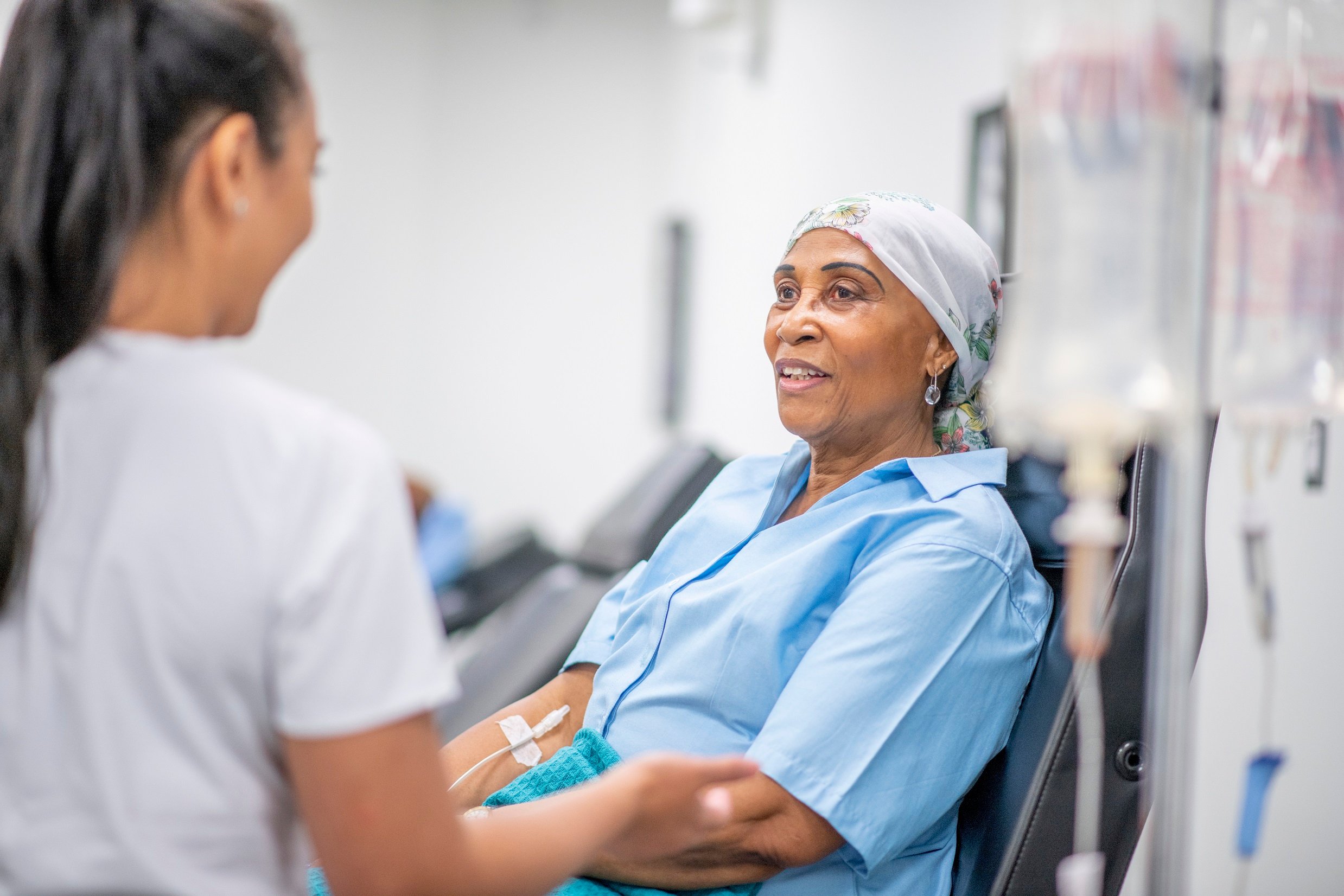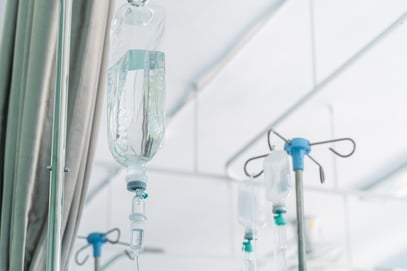What Is Chemotherapy?
5 min read

Chemotherapy is one of the earliest forms of cancer treatment, and it can effectively treat many forms of cancer.
Chemotherapy is a systemic treatment, meaning that it enters the bloodstream and travels throughout the body to:
- Ease symptoms of cancer
- Eliminate cancer from the body
- Decrease the chance of cancer returning
- Keep cancer from spreading or growing
“There are more than 100 types of chemotherapy medications, and we’re always learning about new combinations of medications and methods of delivery that improve chemo’s ability to fight cancer,” said Dr. Sujatha Nallapareddy, an oncologist and hematologist at Rocky Mountain Cancer Centers (RMCC). “As a result, chemotherapy has allowed many patients to experience long-term remission and can even help us cure some cancers.”
How Chemotherapy Is Given
Patients receive chemotherapy in various ways, including:
- Injection
- Intravenous (IV) infusion
- Intravesical therapy, delivered into the bladder through a catheter
- Intrathecally, injected into the brain or spine
- Orally, taken by mouth
- Topically, applied to the skin through creams or other solutions
Some chemotherapy treatments stop cancer cells from growing. Others work to kill or slow the growth of cancer cells. Patients receive chemotherapy in cycles of treatment. You may, for example, receive daily rounds of chemotherapy before taking a few weeks off to allow your body to recover and rebuild healthy cells. Then, you’d go through another cycle. Depending on your treatment plan, you may have a few cycles of treatments.
Understanding Chemotherapy Infusion
Infusion, also called IV infusion or IV chemo, is a common delivery method for chemotherapy. During infusions, an IV line (a thin, soft, plastic tube) is placed to deliver medication from a bag into your vein. A pump controls the flow of medication.
 Peripheral IV: A peripheral IV is a tiny plastic tube with a hub, similar to any IV access used for fluids or blood draws. An oncology nurse first places the plastic tube into a vein in your arm or hand with a needle. The hub stays outside the body and connects to the IV line on the medication bag. You may feel a slight sting similar to getting blood drawn when the catheter is first placed in your vein, but you shouldn’t feel it once it is in place. Peripheral IVs can only stay in place for a few days.
Peripheral IV: A peripheral IV is a tiny plastic tube with a hub, similar to any IV access used for fluids or blood draws. An oncology nurse first places the plastic tube into a vein in your arm or hand with a needle. The hub stays outside the body and connects to the IV line on the medication bag. You may feel a slight sting similar to getting blood drawn when the catheter is first placed in your vein, but you shouldn’t feel it once it is in place. Peripheral IVs can only stay in place for a few days.- Central venous catheter (CVC): CVCs are longer and larger than peripheral IVs and are placed in a chest port. You may have a CVC in place for as long as you are receiving chemo.
- Peripherally inserted central catheter (PICC) line: A PICC line is a flexible, plastic tube with one or more hubs. A specialized nurse places a PICC line into a vein in your arm, and the hub or hubs connect to the IV line that delivers the chemo medication. The PICC line stays in place and is covered with a dressing when you are not getting an infusion.
Chemotherapy medications typically stay in the body for 48 to 72 hours after an infusion. However, it’s important to remember that every chemical passes through the body in slightly different ways and may take a little more or less time to leave the body.
What to Expect During and After an Infusion
You will likely be at the cancer center for a few hours during each infusion treatment, depending on your chemotherapy regimen. Your cancer treatment team may need to do bloodwork if this was not done within 2-3 days prior to your chemotherapy treatment. Once you arrive at the center, you will be weighed, and your vital signs will be taken to make sure the dose of medication is correct. An oncology nurse will then begin your treatment. While you are receiving the infusion, you can relax in a recliner and connect to our WiFi. You can also bring snacks and water, as well as something to read.
The oncology nurse will disconnect the IV once your treatment is done. Many people feel normal after their first treatment. The side effects may build up over multiple treatments. Let your nurse know if you are experiencing severe symptoms during or after your infusion.
Talk to your team if you have new questions or concerns about your treatment. The National Cancer Institute has provided a list of questions to help you get started.
Managing Side Effects of Chemotherapy
Different chemo medications affect people differently, so Dr. Nallapareddy recommends keeping in constant contact with your oncology team during treatment so they can offer tips or medications that can help. Your provider will review these side effects at your chemo teach session prior to your first chemo appointment.
“Many factors go into deciding which types of chemotherapy or other treatments are the best fit for each person’s cancer,” Dr. Nallapareddy said. “We are well aware of the many side effects each treatment can have and want to help you manage them to the best of our ability.”
 Hair loss is a common side effect of chemotherapy that can be difficult for many people. If this is a concern for you, talk with your care team. RMCC offers the Paxman Scalp Cooling System at some clinics, which helps lower the amount of hair loss on the head due to chemotherapy.
Hair loss is a common side effect of chemotherapy that can be difficult for many people. If this is a concern for you, talk with your care team. RMCC offers the Paxman Scalp Cooling System at some clinics, which helps lower the amount of hair loss on the head due to chemotherapy.
Sex and intimacy are also often impacted by chemotherapy treatment. Side effects vary based on the type of cancer. But there are things you and your partner can do to maintain sexual intimacy and closeness during and after cancer treatment.
Side effects can be overwhelming, but you're not alone in the treatment process. The RMCC team is here to help you learn how to manage side effects and when to call your doctor.
“Monitor your side effects as comprehensively as you can,” Dr. Nallapareddy said. “Keeping track can help prevent complications and lead to better treatment outcomes.”
You can use this worksheet from the American Cancer Society.
RMCC cancer support groups can also be an excellent way to learn new information, process emotions, and connect with others going through similar experiences.
Talk with your RMCC team about questions you have or any new side effects you’re experiencing. Contact the RMCC care team through your Navigating Care Patient Portal or request an appointment online.